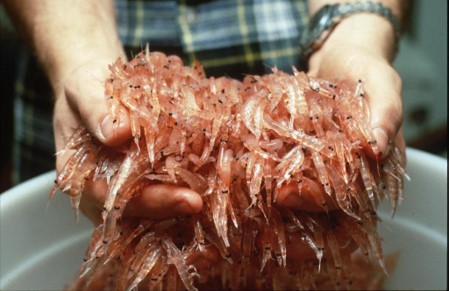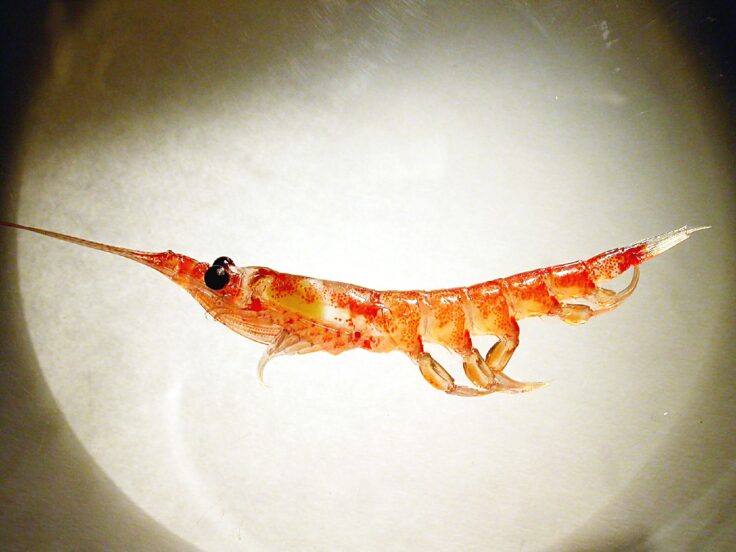Global S&T Development Trend Analysis Platform of Resources and Environment
| Krill provide a highway for ocean carbon storage | |
| admin | |
| 2020-11-27 | |
| 发布年 | 2020 |
| 语种 | 英语 |
| 国家 | 英国 |
| 领域 | 资源环境 |
| 正文(英文) | Large krill swarms in the Southern Ocean could help remove additional carbon from the atmosphere, in a way that is currently ‘hidden’ in global models. Scientists knew that the carbon-rich faecal pellets that krill produce, sink in the water column and can transfer carbon from the atmosphere to the deep ocean. In this study, a team from British Antarctic Survey found that krill moulting (shedding of the exoskeleton) could double the amount of carbon removed. The research is published today (27 November) in the journal Nature Communications. Antarctic krill (Euphausia superba) are the main diet of whales, penguins and seals and form some of the highest concentrations of animal biomass in the world’s oceans – with over an estimated 150 million tonnes. They are also harvested for food.  This study provides the first estimate of how much carbon large swarms of Antarctic krill can draw down and store through the moulting process. The efficiency of this process has an important influence on our global climate.
The team worked in the north Scotia Sea, located in the Southwest Atlantic Sector of the Southern Ocean, where more than 50% of all Antarctic krill are located. They collected krill moults over a year using a trap moored close to the seabed. 
The Southern Ocean covers 14% of the Earth’s surface and plays a fundamental role in controlling atmospheric carbon levels and global climate. This study highlights the important role that krill play in this process. Continuous moulting by Antarctic krill drives major pulses of carbon export in the north Scotia Sea, Southern Ocean, Manno C, Fielding S, Stowasser G, Murphy EJ, Thorpe SE, Tarling GA, is published in the journal Nature Communications: https://www.nature.com/articles/s41467-020-19956-7
|
| URL | 查看原文 |
| 来源平台 | British Antarctic Survey |
| 文献类型 | 新闻 |
| 条目标识符 | http://119.78.100.173/C666/handle/2XK7JSWQ/305236 |
| 专题 | 资源环境科学 |
| 推荐引用方式 GB/T 7714 | admin. Krill provide a highway for ocean carbon storage. 2020. |
| 条目包含的文件 | 条目无相关文件。 | |||||
| 个性服务 |
| 推荐该条目 |
| 保存到收藏夹 |
| 查看访问统计 |
| 导出为Endnote文件 |
| 谷歌学术 |
| 谷歌学术中相似的文章 |
| [admin]的文章 |
| 百度学术 |
| 百度学术中相似的文章 |
| [admin]的文章 |
| 必应学术 |
| 必应学术中相似的文章 |
| [admin]的文章 |
| 相关权益政策 |
| 暂无数据 |
| 收藏/分享 |
除非特别说明,本系统中所有内容都受版权保护,并保留所有权利。
修改评论